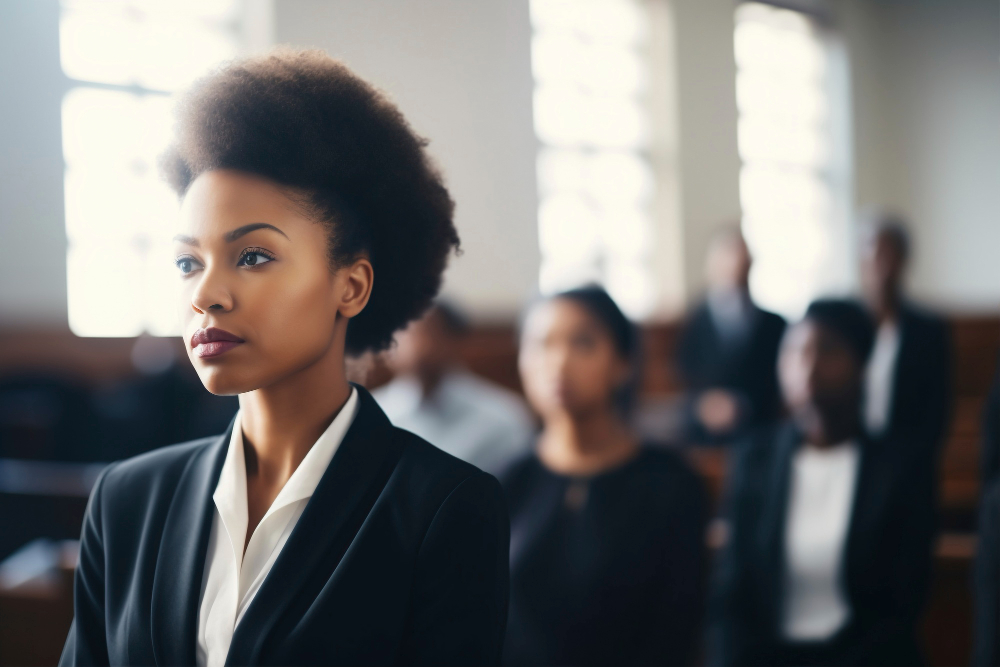Introduction: The Discipline Divide in Schools
Imagine you’re in school, working hard, trying to learn, and making friends. But every time something goes wrong, you see that some kids—often kids who look like you or your friends—are the ones who get in trouble the most. It’s not always fair. Studies show that students of colour, especially Black and Indigenous kids, are punished more harshly than white students, even for the same actions. This unfairness doesn’t just hurt their learning; it also makes them feel like they don’t belong, like they’re not welcome.
In Ontario, this problem is real, and it can have serious consequences for young people of colour. Many students who face these unfair punishments can end up in even more trouble later, sometimes even in the criminal justice system. At More Than Just A School, we believe it doesn’t have to be this way. We’re here to talk about the issue, why it’s happening, and what we can do together to make schools safe and fair places for all students.
Racial Disparities in School Discipline—An Overview
Disproportionate Punishment and Its Impacts on Youth of Colour
Did you know that in many schools across North America, Black, Indigenous, and other students of colour are far more likely to be suspended or expelled than white students? In fact, studies show that Black students are three times more likely to be suspended than their white classmates in Ontario schools. And often, this punishment happens for small things like being late to class, talking back, or even things as simple as wearing certain clothes.
But what’s the big deal about suspension or expulsion? When a student is suspended, they miss out on important lessons, fall behind on their work, and feel isolated from their classmates. Imagine missing school, then struggling to catch up without any support. This can make students feel like they don’t belong or aren’t good enough. It’s unfair and affects kids’ confidence and mental health.
The Link Between School Discipline and the Justice System
How the School-to-Prison Pipeline Threatens Marginalized Youth
Now, here’s the part that’s really worrying. When students of colour face punishment at school over and over, they can end up in trouble with the law. This process is often called the school-to-prison pipeline. It’s a system where kids who get in trouble at school are more likely to get into trouble with the law as they grow up. Studies have shown that many students who are expelled or suspended, especially kids of colour, are more likely to end up in juvenile detention or even prison.
For example, if a Black student is suspended multiple times, they may start skipping school to avoid being punished again, fall further behind, or even give up on school. Without support, these young people can make risky choices, which increases their chances of getting into the justice system. This pipeline affects families and entire communities, and it’s why organizations like More Than Just A School are here to help stop it.

Systemic Causes of Disciplinary Disparities
Examining the Roots of Racial Inequities in School Discipline
So why does this keep happening? Why do students of colour get punished more than others? There are a few reasons, and some of them are hard to see right away.
- Implicit Bias: Sometimes, even without meaning to, teachers or school staff may expect students of colour to misbehave more than others. This unconscious bias can lead to harsher punishments, even when students do the same things.
- Zero-Tolerance Policies: Many schools have “zero-tolerance” policies, which mean that any rule-breaking leads to automatic punishment, like suspension. But these rules don’t always take into account the context or situation. If a student is late because they have to take care of siblings or because they didn’t have access to transportation, punishing them doesn’t help.
- Lack of Cultural Understanding: Not all teachers understand the cultural backgrounds of the students they teach. For instance, some students may express themselves differently or dress in ways that reflect their culture. Without cultural understanding, teachers might see these differences as “disrespect” or “breaking the rules.”
In Ontario, these issues are real. Black students, for example, face double the chances of suspension compared to their peers. More Than Just A School sees this as a major issue because it means many students of colour feel misunderstood and unfairly treated in places that should help them grow.
The Role of Organizations in Addressing Inequities
Community-Led Efforts for Change
This is where groups like More Than Just A School come in. We believe that schools should be safe places where all kids are treated fairly and have the chance to succeed. To help make this happen, we work with parents, community leaders, and schools to create programs that support students of colour. Here’s how we help:
- Mentorship Programs: We connect students with mentors who look like them, understand their experiences, and help guide them through challenges.
- Counseling and Support: We provide access to counseling for students who’ve faced harsh discipline, helping them find positive ways to cope and succeed.
- Community Partnerships: We partner with schools and local leaders to raise awareness about the effects of unfair discipline and encourage fair treatment for all students.
Through these programs, we give students the tools to stay in school, succeed, and feel safe. But we need everyone’s help. Without community support, it’s hard to make lasting change.

Solutions for Reducing Disciplinary Disparities
Building a Framework for Fairness in Schools
There are real ways to fix this problem and make schools better for all kids. Here are some proven ideas that are working in some places and could be a big help in Ontario:
- Restorative Justice Practices: Instead of punishing students, restorative justice focuses on finding ways to solve problems together. For example, if two students have a conflict, they sit down with a counselor or teacher and talk it through. This helps them learn and grow rather than feeling punished.
- Anti-Bias Training for Educators: Schools can offer training that helps teachers recognize and avoid biases. This training teaches educators how to treat all students fairly, no matter their background.
- Inclusive School Policies: Schools can create rules that are fair for everyone, taking into account the needs and circumstances of all students. This includes looking closely at zero-tolerance policies to see if they’re really helping students or just causing harm.
Some schools in Ontario and around the world have already started using these methods, and the results are encouraging. When schools focus on fairness and understanding, students feel safer and perform better.
Conclusion: A Call to Action for Equity in Education
It’s clear that unequal punishment in schools is a big problem, and it’s one that affects the future of young people and entire communities. At More Than Just A School, we believe that all students deserve a fair chance to succeed and feel supported, no matter their background. We’re dedicated to making this vision a reality through our programs, partnerships, and advocacy.
But we can’t do it alone. We need the support of parents, community leaders, and everyone who cares about fair education. Together, we can make schools in Ontario and beyond places where all students are treated fairly and can thrive.


